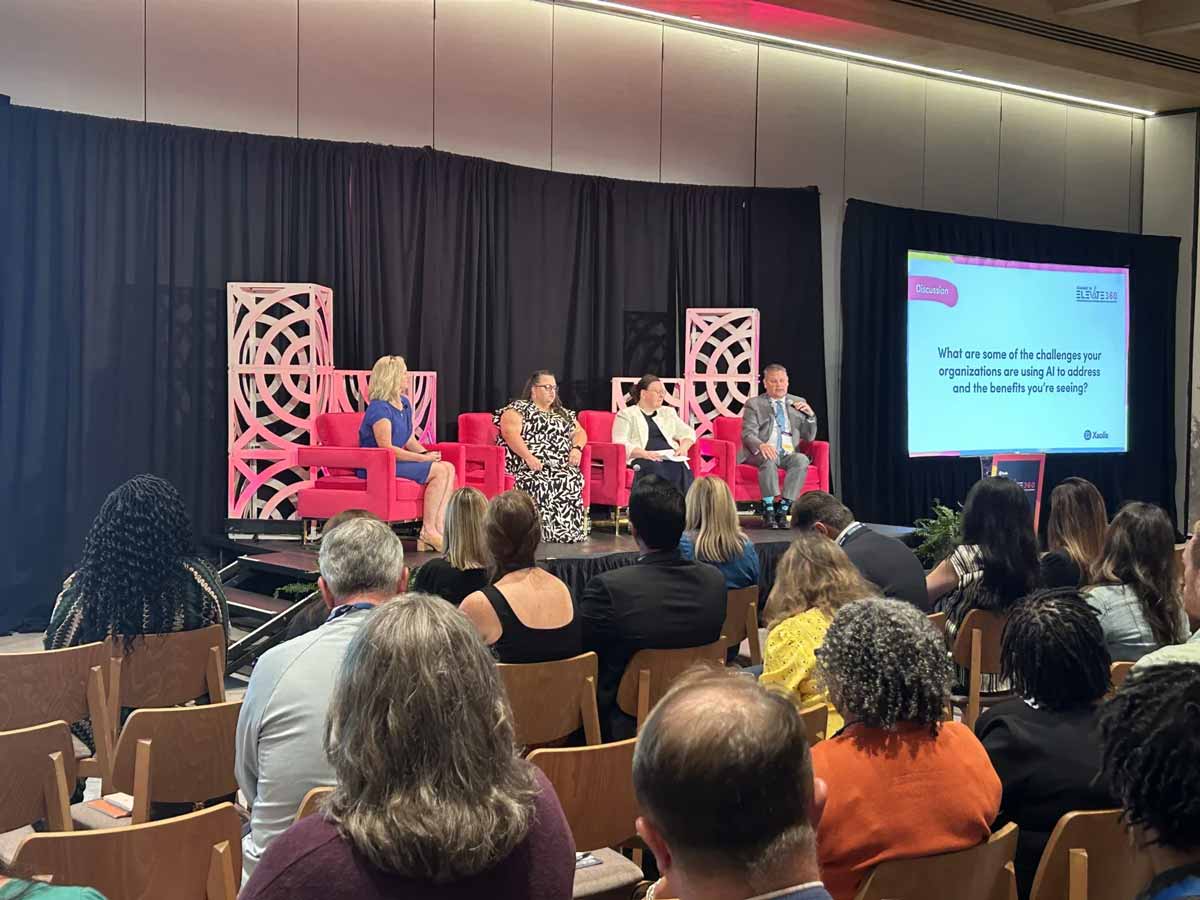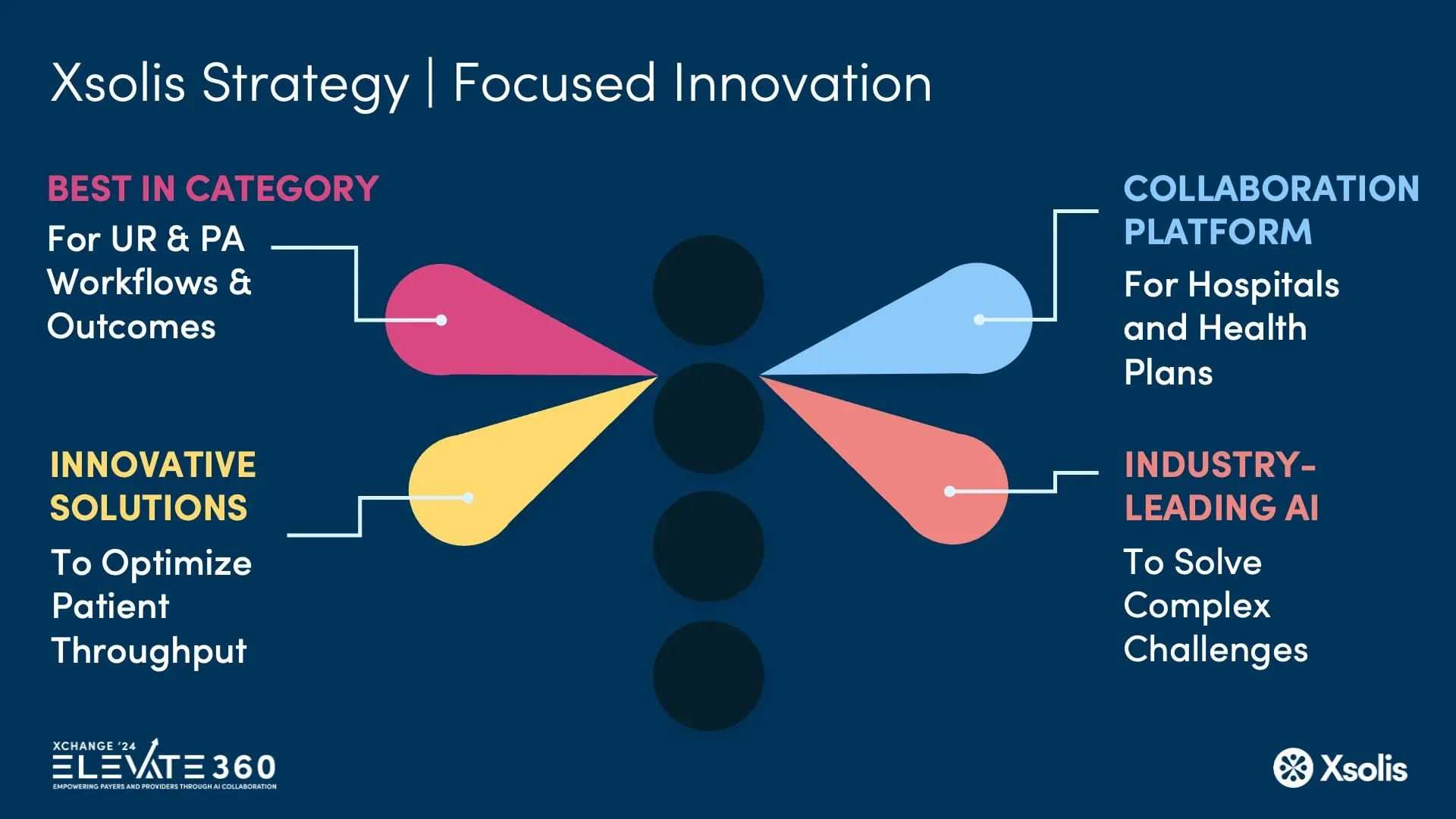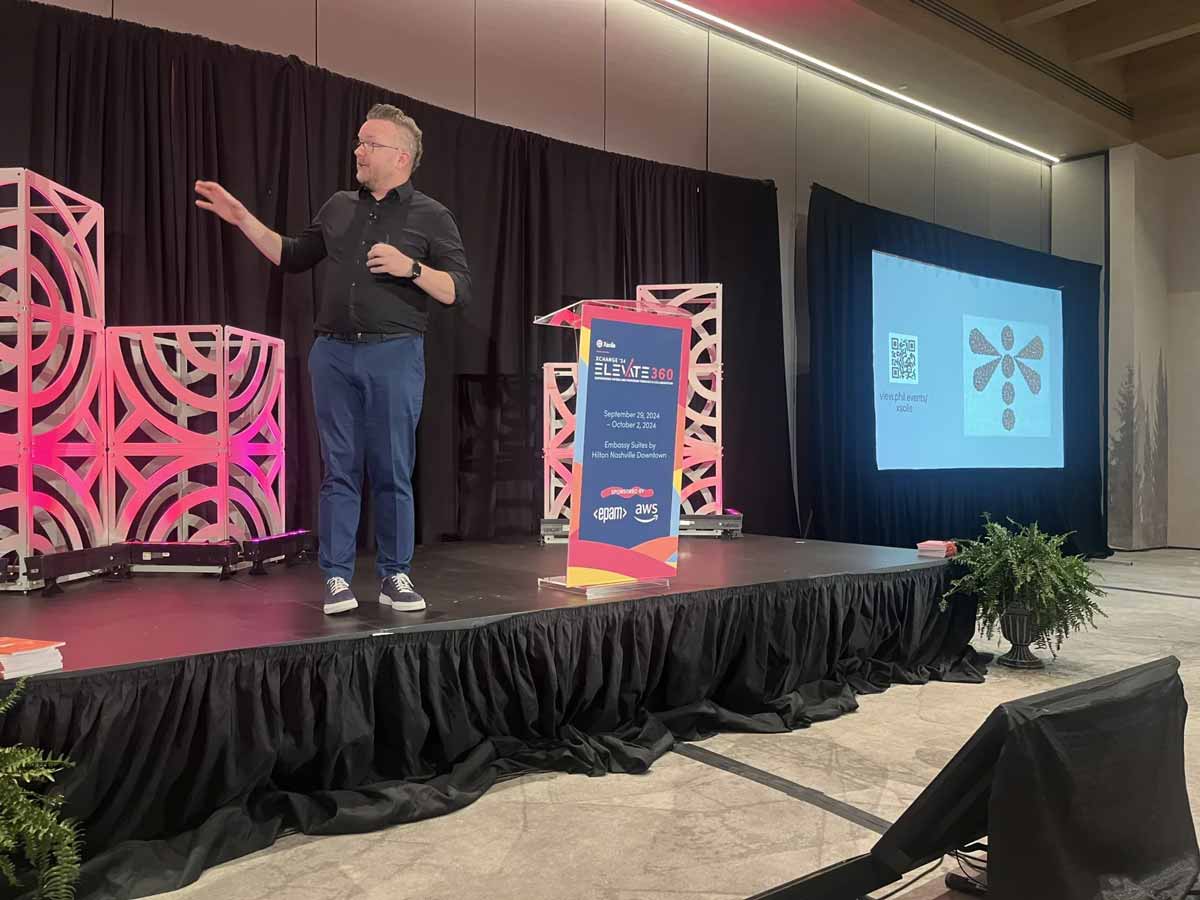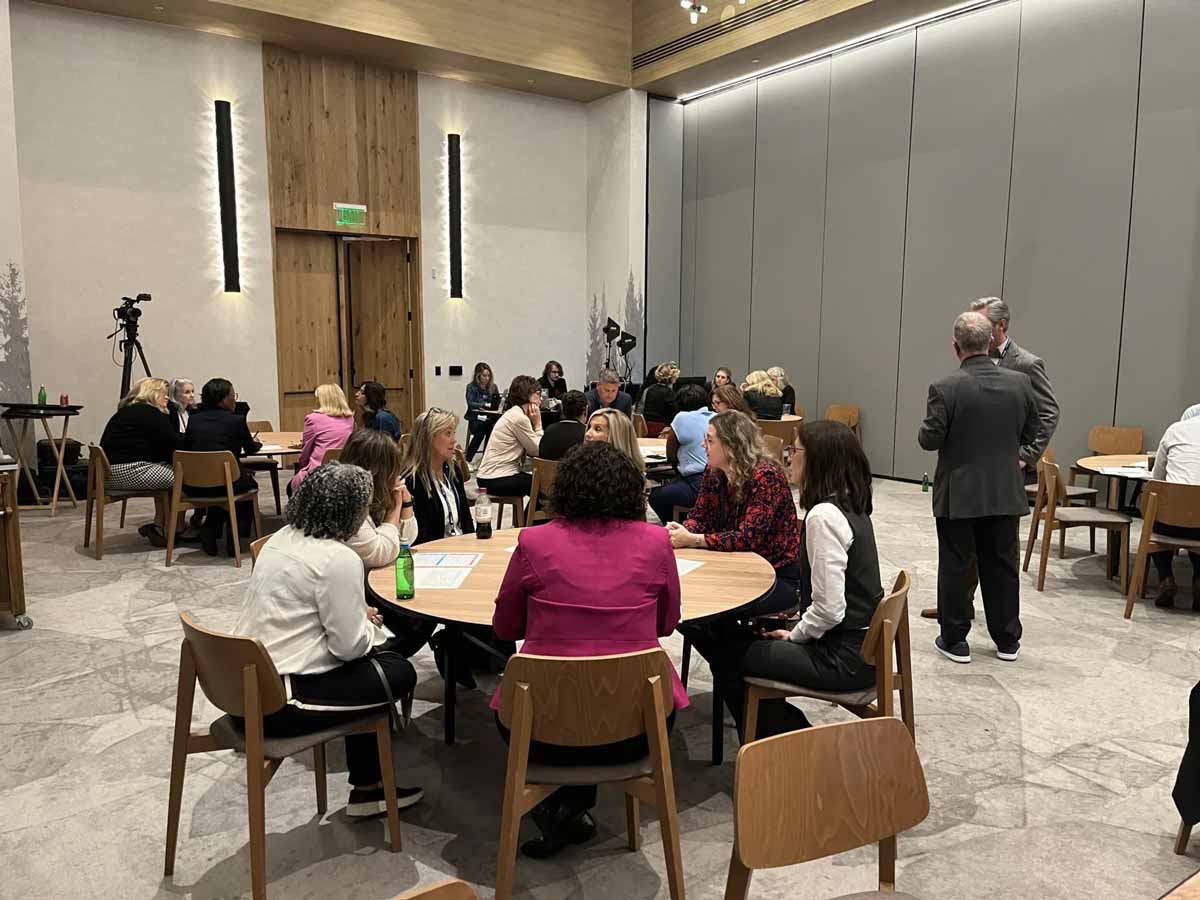XCHANGE ’24 reiterates that people and processes must align to reap maximum benefits of AI tools
During Xsolis CEO Joan Butters’ keynote address at XCHANGE ’24, she emphasized the immense financial stakes involved in the healthcare industry, noting the “billions” at play in 2024.
- $39 billion – what providers spend annually to comply with regulatory requirements
- $42.5 billion dollar hospital labor increase since 2021
- $20 billion – what it costs hospitals and health systems annually to appeal denials
- $10 billion a year that hospitals are spending on prior authorizations with payers
- $6 billion annual price tag for cyberattacks against healthcare organizations
XCHANGE was held in Nashville September 29 through October 2 to bring together health system and health plan leaders who are using Xsolis’ solutions to bring financial relief to each of their organizations.
“I know we say it every year, that we are being asked to do more with less, but it’s true,” said Dr. Debbie Schardt, Assistant Vice President of Revenue Cycle and Utilization Management at MultiCare Health Systems. She said 2024 has been the hardest year to date in her 30-year career. “Each year, we must show more ROI to get anything added to our budgets.”
Integrating automation and AI is no longer a luxury but a necessity to remain compliant and financially viable.

Raising the Bar in 2024
XCHANGE 2024, “Empowering Payers and Providers Through AI Collaboration,” was Xsolis’ largest conference so far, with double the attendees from 2022 and three days of programming. 2024 also marked additional learning tracks for executive versus champion attendees and around double the opportunities for continuing education credits than previous years, at eight CEU sessions.
Client-led or Xsolis staff-led sessions laddered up to four themes of focused innovation throughout the conference:
- Best in category utilization review and physician advisor workflows and outcomes
- Innovative solutions to enhance mid-revenue cycle
- Collaboration platform for hospitals and health plans
- Industry-leading AI to solve complex challenges

On Day One, a more intimate group of executive attendees were led through updates and forecasts from Xsolis leadership, closing the day with an interactive workshop, “The Future of Healthcare is Collaborative: A Hands-On AI Workshop for Providers and Payers.”
Days Two and Three continued with champion programming to total twenty educational learning sessions throughout the conference, from product roadmap “sneak peeks” to clients sharing best practice tips and tricks or case study results.
Product and account teams hosted a Dragonfly Innovation Lab to test-drive Dragonfly features. Also new in 2024 – exhibit hours to learn about sponsors, EPAM and AWS; and work groups were organized by roles and business challenges.
Back by popular demand were networking events that included Nashville-based music — an acoustic act or a full, live band on different evenings.
Keynote speakers each morning shared Xsolis’ vision for the future (CEO and Co-founder Joan Butters), provided interactive art exercises to foster creative problem-solving (multimedia artist Phil Hansen; pictured below), or provided advice on how to create sustainable business practices while navigating the evolving regulatory landscape (HFMA’s Shawn Stack).

Elevated Themes for Complicated Times
In post-event feedback, attendees favored interactive work groups and client panels – due to their opportunities to get real with fellow users about serious problems.
Some of those client panels included:
- Speaking the Same Language: How Objective Analytics Unifies Providers & Health Plans
- Responsible AI: Framework for Optimal Outcomes & Aligned Value
- From Adversaries to Allies: Provider and Health Plan Financial Leadership Panel
Key insights from panelists, and from attendees throughout the conference, were:
- Seek clarity and alignment toward shared goals
While AI holds promise to improve efficiency and reducing friction, successful adoption hinges on transparency and clear communication about how these systems function. Be clear about the “why,” and align people, processes, and tools toward those goals.“You are the expert. This is a tool,” said Hoa Cooper, Executive Director of Care Management at OSF HealthCare. “As much as I love Xsolis, they’re not going to solve all of our problems.”
“I think sometimes we make the mistake that the tool is going to fix everything; it isn’t. So, we have to have good processes, accountability, and buy-in to make it work,” Hoa said, noting her experience implementing various software solutions spans 38 years.
The other critical ingredient for successful adoption of new tools, according to Hoa? High-touch, consultative customer service.
- Build trust to achieve successful outcomes with AI
Trust emerged as a cornerstone of effective AI implementation, but to also achieve payer-provider collaboration. While it takes time to build trust, attendees’ growing frustrations with outdated processes have made the journey an easier one. As Dr. Matthew Gorman, Medical Director, Care Management at OSF HealthCare said, “(AI) is not about losing your job, it’s about changing your job.”“New processes can be a tenuous thing,” agreed Suzanne Wilson, Associate Vice President of Population Health with AnMed. “When I first mentioned we were going to open up our (Xsolis) platform to payers, I heard, ‘You’re going to do what?’ which I followed with, ‘Everyone take a deep breath.’ … Shared AI technologies smooth the journey. It creates a domino effect that flows downstream.”
Xsolis’ shared AI insights “flip the script” Suzanne said, because tough conversations become easier to navigate, opening the door for more give-and-take to reach shared goals.
- AI can elevate the nature of clinicians’ work to create happier employees
Healthcare burnout, particularly in revenue cycle management and utilization review, persists. The emotional toll of navigating complex patient cases, coupled with high volumes of manual work, is straining the workforce.Dr. Debbie Schardt from MultiCare Health System shared how Xsolis’ AI tools are empowering staff to focus more on meaningful patient care, leading to greater job satisfaction and reduced burnout.
A shared AI platform such as Xsolis’ not only reduces manual work – saving around two hours a day per user – but also puts the patient data to support appropriate care status at the clinician’s fingertips.
Generative AI (GenAI) was described as one of the newer but less proven tools in the AI toolbox. When deployed responsibly, GenAI has the potential to layer on and augment these time-saving efficiencies.
The end result is more defensible care decisions, and employees can handle tasks more productively.
“The improved job satisfaction should not be overlooked,” said AnMed’s Suzanne Wilson. “Some of my team didn’t want to call (a national health plan) prior to using Xsolis. And they do this more amicably now.”

What’s Next for AI in Healthcare?
While recent headlines might suggest that the investment majority in AI solutions has been dedicated toward generative AI, or toward adopting advanced technologies in prior authorization specifically, XCHANGE attendees have quietly been applying AI technologies to solve concurrent authorizations and associated revenue challenges to the tune of 11x ROI a year, on average.
Concurrent authorization encompasses utilization management, which has been confined to the basement in some hospital systems historically. But utilization management is also coming into the spotlight. That’s due to the financial lifeline utilization management can bring health systems when medical necessity decisions are “right from the start,” said the group.
In short, concurrent authorization is an area rife for the next wave of AI transformation and investment, due to its culpability in creating the billions in financial waste that CEO Joan Butters referenced, stemming from unnecessary administrative burden and payer-provider friction.
AI-powered collaboration is a paradigm shift, which takes time, visionary leaders, and end users who champion the shift.
AnMed Health’s Suzanne Wilson probably summed it up best: “How do you evolve the work? You don’t just turn it on and solve everything. You have to constantly whittle at it. It’s a journey, and we have lots of opportunities ahead of us.”
Would you like to learn more about XCHANGE programming? Let’s chat.

